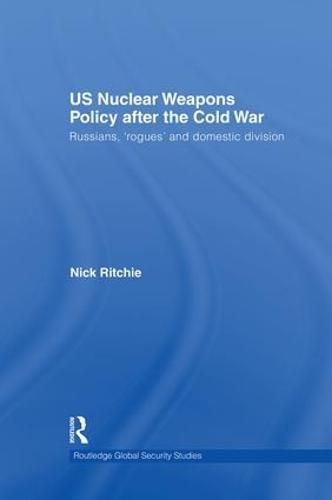Readings Newsletter
Become a Readings Member to make your shopping experience even easier.
Sign in or sign up for free!
You’re not far away from qualifying for FREE standard shipping within Australia
You’ve qualified for FREE standard shipping within Australia
The cart is loading…






This book offers an in-depth examination of America’s nuclear weapons policy since the end of the Cold War.
Exploring nuclear forces structure, arms control, regional planning and the weapons production complex, the volume identifies competing sets of ideas about nuclear weapons and domestic political constraints on major shifts in policy. It provides a detailed analysis of the complex evolution of policy, the factors affecting policy formulation, competing understandings of the role of nuclear weapons in US national security discourse, and the likely future direction of policy. The book argues that US policy has not proceeded in a linear, rational and internally consistent direction, and that it entered a second post-Cold War phase under President George W. Bush. However, domestic political processes and lack of political and military interest in America’s nuclear forces have constrained major shifts in nuclear weapons policy.
This book will be of much interest to students of US foreign policy, nuclear proliferation, strategic studies and IR in general.
$9.00 standard shipping within Australia
FREE standard shipping within Australia for orders over $100.00
Express & International shipping calculated at checkout
This book offers an in-depth examination of America’s nuclear weapons policy since the end of the Cold War.
Exploring nuclear forces structure, arms control, regional planning and the weapons production complex, the volume identifies competing sets of ideas about nuclear weapons and domestic political constraints on major shifts in policy. It provides a detailed analysis of the complex evolution of policy, the factors affecting policy formulation, competing understandings of the role of nuclear weapons in US national security discourse, and the likely future direction of policy. The book argues that US policy has not proceeded in a linear, rational and internally consistent direction, and that it entered a second post-Cold War phase under President George W. Bush. However, domestic political processes and lack of political and military interest in America’s nuclear forces have constrained major shifts in nuclear weapons policy.
This book will be of much interest to students of US foreign policy, nuclear proliferation, strategic studies and IR in general.